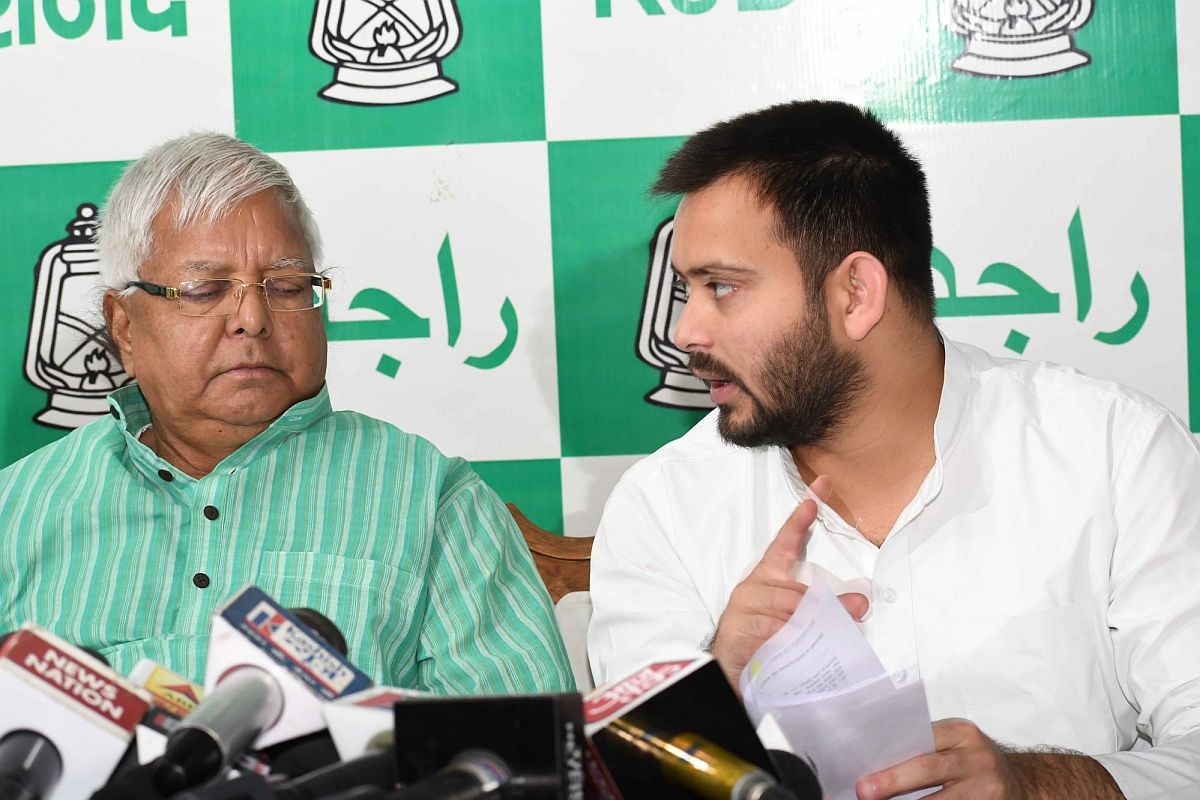Rajnath Singh files nomination after impressive road show in Lucknow
Union ministers Smriti Irani & Kaushal Kishore also file nominations
In fact, the splintering of the old Janata Dal which reached its electoral apogee in the late 1980searly 1990s could be said to have begun with that parting of ways. But it is also ~ an often unrecognised ~ fact that the Janata Dal’s many offshoots today represent a significant section of the Indian electorate.

RJD leaders Lalu Prasad Yadav and Tejashwi Yadav (Photo: IANS)
In itself, the merger of veteran ‘socialist’ politician Sharad Yadav’s Loktrantik Janata Dal (LJD) with the Rashtriya Janata Dal (RJD) led by the father-son duo of Lalu Prasad and Tejashwi Yadav is a political non-event.
Even those with an interest in developments on the margins of Indian left-of-centre politics would be hard-pressed to read deep significance in the electorally largely irrelevant LJD merging itself with the RJD, the primary Opposition force in Bihar ranged against the ruling coalition of the Janata DalUnited (JD-U) and Bharatiya Janata Party (BJP) led by Nitish Kumar.
Essentially, all that has happened is Mr Sharad Yadav and his family members who have been fighting polls on LJD and Congress tickets respectively after the socialist patriarch floated the LJD in 2018 have wound up their political enterprise to be welcomed into the RJD 25 years after Mr Yadav fell out with Mr Prasad but is now happy to promote the latter’s son as the “future of Samajwadi politics”.
Advertisement
In fact, the splintering of the old Janata Dal which reached its electoral apogee in the late 1980searly 1990s could be said to have begun with that parting of ways. But it is also ~ an often unrecognised ~ fact that the Janata Dal’s many offshoots today represent a significant section of the Indian electorate.
The JD-U and RJD in Bihar, the Akhilesh Yadav-led Samajwadi Party (SP) in Uttar Pradesh (UP), Naveen Patnaik’s Biju Janata Dal (BJD) in Orissa, and former Prime Minister HD Deve Gowda-headed Janata Dal-Secular (JD-S) in Karnataka are now all distinct political entities.
The offshoots of the old Lok Dal, which too was part of the Janata Dal, are either allies of the main Opposition as in UP, or the ruling dispensation as in Haryana. The significance of the LJD-RJD merger lies in the fact that samajwadi grandee Mr Sharad Yadav utilised the opportunity to call for unifying the old Janata Dal constituents or, to use his words, “socialist forces” in preparation for the General Election scheduled for 2024.
The problem is that while on paper this seems very possible ~ indeed, only Mr Nitish Kumar in Bihar and Mr Dushyant Chautala in Haryana are with the BJP and even they are not exactly ideologically aligned with it ~ the hoary history of the Janata Dal’s internecine feuds and its leaders’ ego clashes will inspire little confidence in political observers and the voting population. This does not, however, mean a reconstituted Janata Dal, even if in the form of a front and not a single, unified party, cannot be a player in a putative Opposition coalition against the BJP in the Lok Sabha poll.
Perhaps it may even show the way to the Congress which needs desperately to begin a similar outreach to its former leaders who have departed to form their own parties with considerable success. The BJP and the Prime Minister Narendra Modi remain clear frontrunners to emerge victorious in the battle of the hustings in 2024. But if the two Opposition blocs can get their act together, even for self-preservation, the electoral contest may get interesting
Advertisement